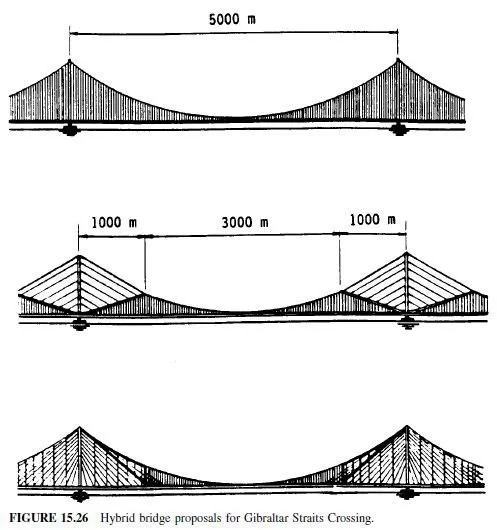Because of flexibility and susceptibility to vibration under dynamic loads, pure suspension bridges are rarely constructed for railway spans. They are sometimes used, however, where dead load constitutes a relatively large proportion of the total load. Where provisions for both railway and highway traffic is necessary, as for the future extension of the Salazar Bridge (Fig. 15.7), the addition of inclined cable stays from the pylon to the stiffening girder is advantageous or a cable-stayed bridge may be used, for increased stiffness.
An important consideration in the design for rail loading (including rapid-transit trains) is the positioning of the tracks with respect to the transverse centerline of the deck structure.
In the Williamsburg Bridge (Fig. 15.29a), the railway is positioned adjacent to the centerline, greatly minimizing torsional forces. In the Manhattan Bridge (Fig. 15.29b), the railway is positioned outboard of the centerline, resulting in large torsional forces. As a result of this positioning, the Manhattan Bridge, over the years, has suffered damage and had to be retrofitted with a torsion tube to increase its resistance to torsional forces.
The Zarate-Brazo Largo Bridges in Argentina (two identical structures) are unique cablestayed
bridges not only from the standpoint of supporting highway and railroad traffic, but also in that the rail line is on one side of the structures. This positioning necessitated an increased stiffness of the stays on the railroad side (see W. Podolny, Jr., and J. B. Scalzi, Construction and Design of Cable-Stayed Bridges, 2d ed., John Wiley & Sons, Inc., New York.)




Movie content developed around Halloween, specially makeup tutorials, has genuine durability, and uploads from after some
duration ago remain producing views and wedding on YouTube.